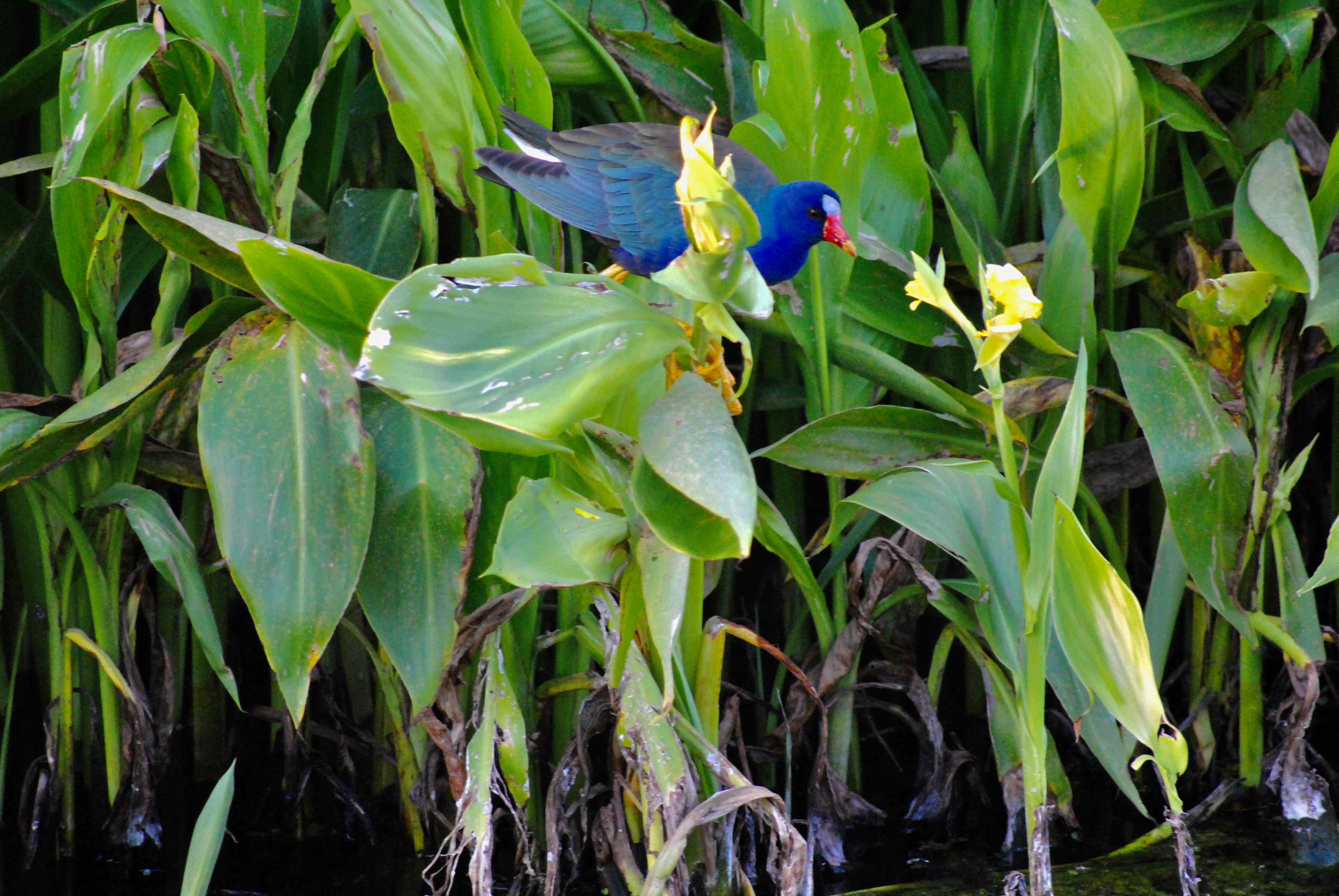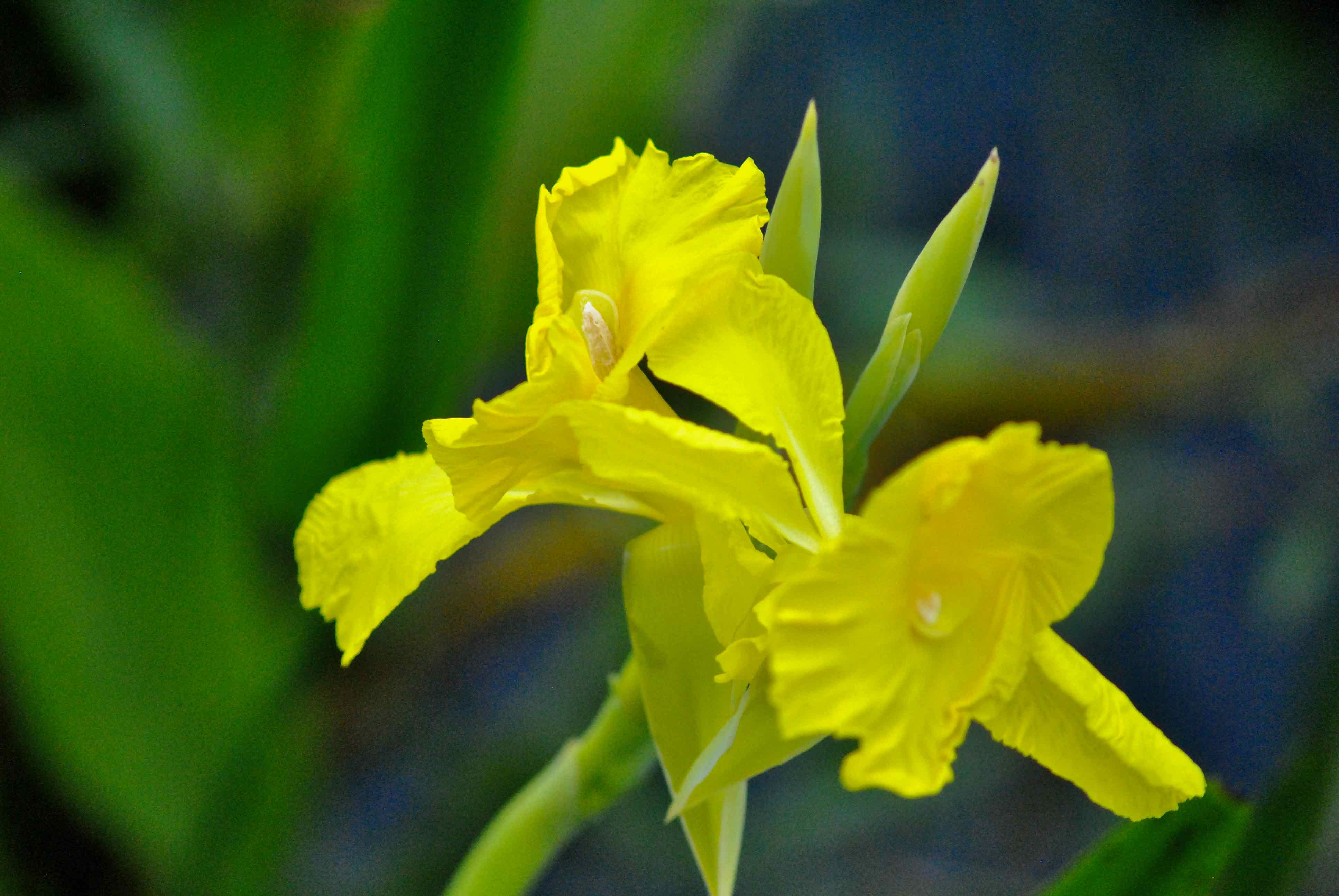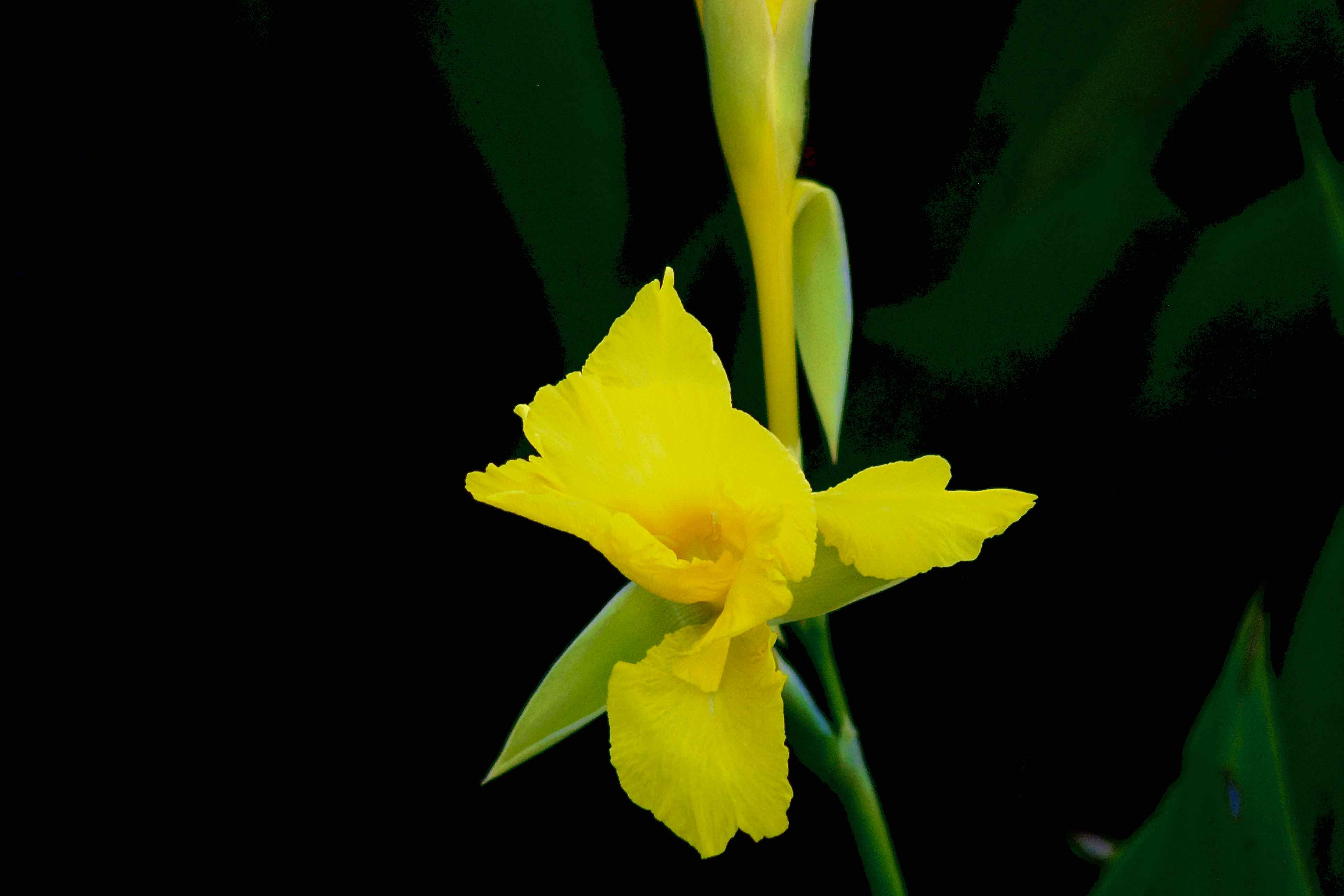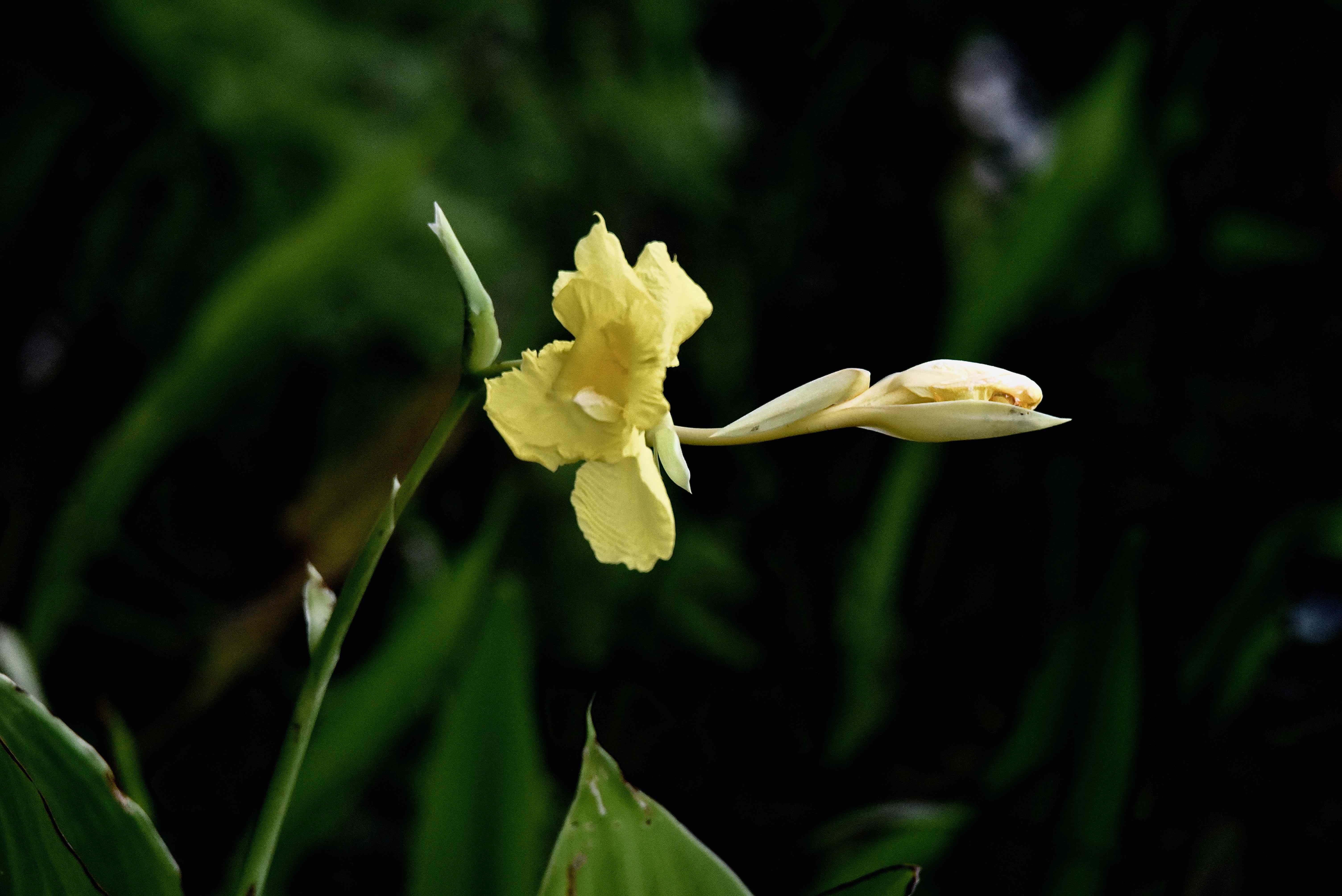
Golden canna, photographed at Green Cay Nature Center, Boynton Beach, Palm Beach County
Extraordinarily beautiful and rare best describes golden canna, Canna flaccida. But this plant has much more to offer than looks. It is also extraordinarily useful.
It is a Florida native found throughout much of the Peninsula and parts of the Panhandle. Small stands of golden canna adorn the edges of marshes, swamps and boggy areas throughout Florida and the southeastern United States.
Golden canna can be fairly tall, growing to six feet, with clusters of three-inch-long yellow flowers sitting atop the stalks. The leaves are large, oblong or eliptically shaped and pointed at the end, one overlapping the next as they work their way up the plant. Golden canna grows in wet to moist soils but can withstand some drought. It likes full sun or part shade. It blooms spring through summer, as early as March in South Florida, later in the season farther north. It is cold sensitive; the foliage will die back during the winter in northern Florida but stays verdant year-round in the southern end of the state. It is a perennial.
It is grown in cold places as an ornamental, but the rhizomes, fleshy underground stems from which new shoots arise, have to be dug up and stored each fall and replanted in the spring. There are cultivars of golden canna sold commercially, and they range in color from pink to red to white to varigated. They still need to have wet feet, so they're still limited to water gardens, the edges of ponds and lakes and other places with damp soil.
The benefits of this showy plant are numerous. Good looks, obviously, but golden canna can prevent erosion along bodies of water. It is a phytoremediation agent, meaning it helps remove excess nutrients, like nitrogen and phosphorous, from water runoff (a major problem in restoring the Everglades).
The foliage provides cover for a multitude of amphibians, reptiles, insects, fish, other aquatic creature and their offspring. The seeds provides food for birds; bees, bats — yes, bats — and birds, hummingbirds in particular, sip the flower's nectar (and help it reproduce as part of the bargain). The Brazilian skipper butterfly uses golden canna as a host plant for its larva. Dragonfly larva use the leaves as a launchpad when they take their first flight into adulthood.
But wait! There's more! The rhizomes, which look similarly to ginger, have been harvested and used commercially as a starch used to feed the sick because it is large, molecularly speaking, and easily digested. The rhizomes are also edible raw, but better boiled or baked. The Seminoles put the seeds in turtle shells to make ceremonial rattles. The seeds also have been used to make jewelry, toys and dyes, the leaves to make paper. The stems and leaves have been fed to cattle. The seeds, by the way, can remain viable for as long as 600 years, and are tough enough to have been used as buckshot, according to Eat the Weeds.
The Institute for Regional Conservation considers golden canna to be a rare plant in South Florida, but it is not listed as either threatened or endangered by any agency.
Golden canna is also known as bandana-of-the-Everglades, wild canna and, believe it or not, bird shot. It is a member of Cannaceae, the canna family, of which there is only one genus — Canna.
Click on photo for larger image
U.S. Department of Agriculture Distribution Maps
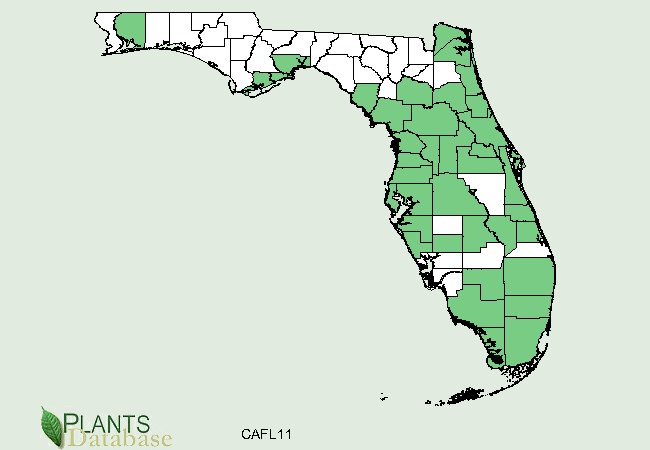

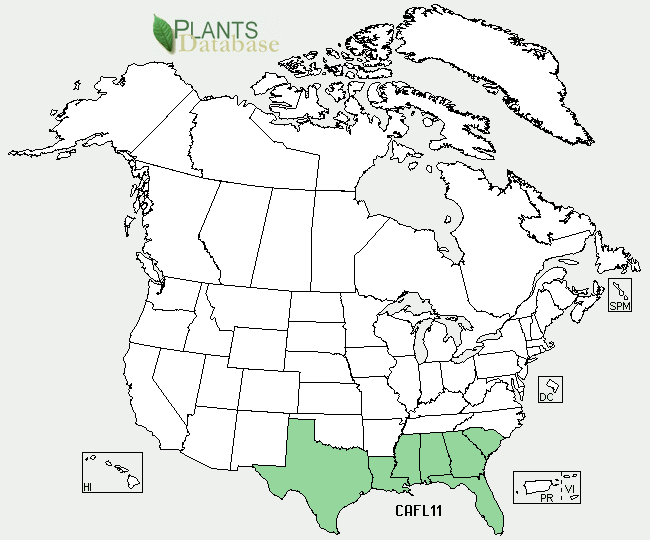
Links for Golden Canna

